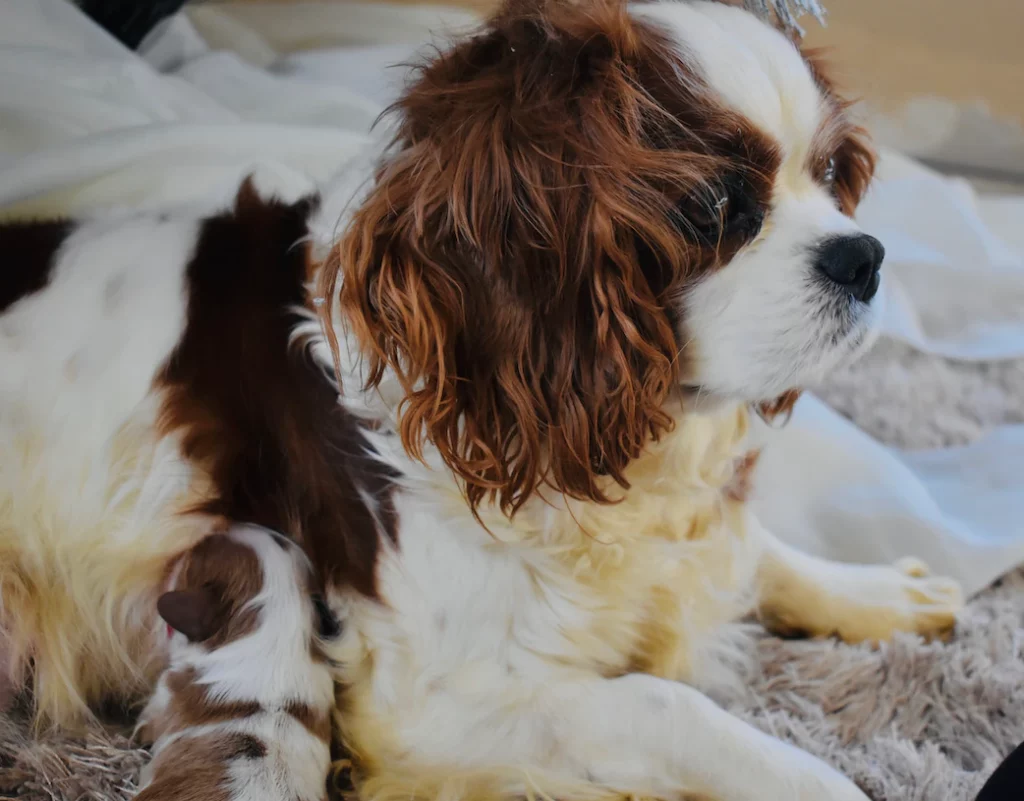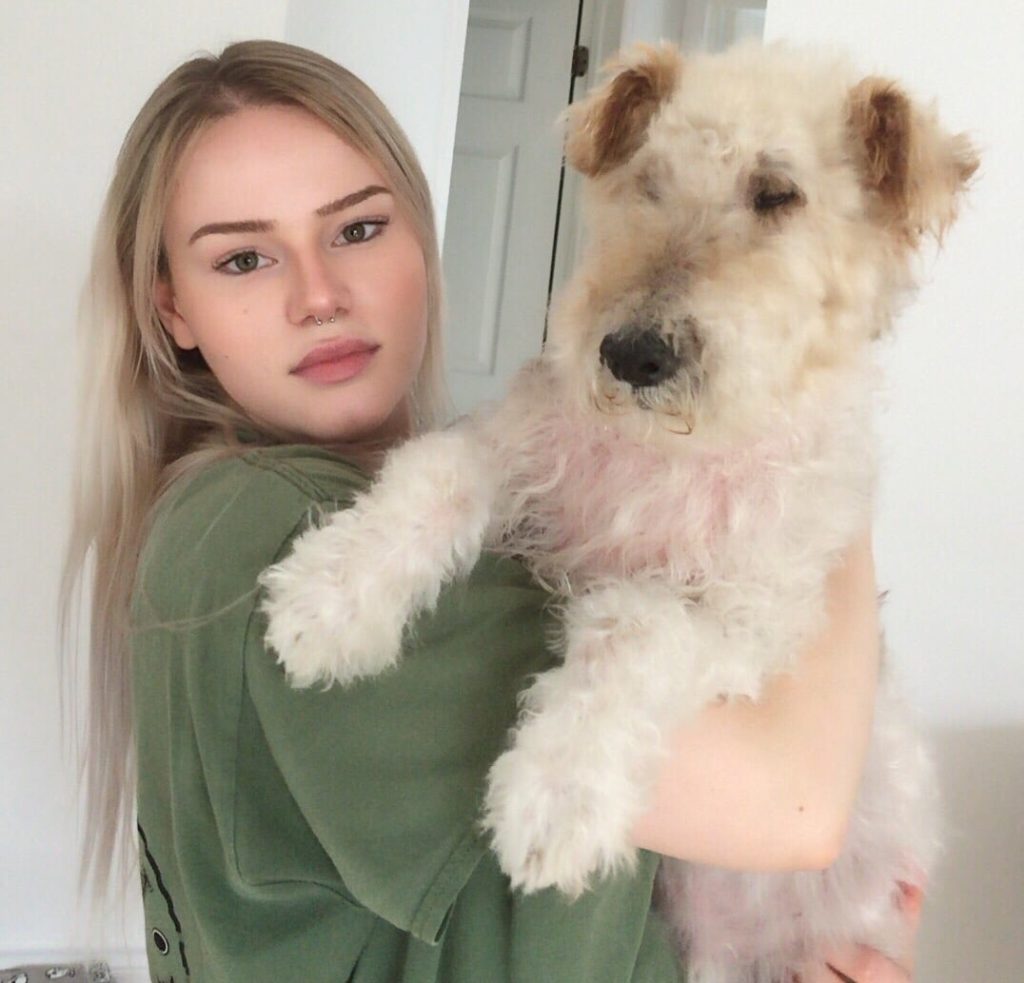The death of puppies inside a female dog can be a distressing and potentially life-threatening situation. In this blog post, we will address the question of how long a dog can live with dead puppies inside her. It is important to note that this is a serious condition that requires immediate veterinary attention.
What Are the Consequences of a Puppy Stuck in the Mother?
The retained fetal or placental tissue poses significant risks to both the mother’s health and her ability to care for any surviving puppies. Some potential consequences include:
– Infection: The presence of decomposing tissue provides an ideal environment for bacterial growth, which can result in severe infections such as septicemia or metritis. These infections can rapidly spread throughout the body and have life-threatening consequences.
– Toxicity: As the dead puppies decompose, toxins can be released into the mother’s bloodstream. These toxins can affect vital organs and potentially lead to organ failure if left untreated.
– Uterine Rupture: In rare cases, the pressure from a stuck puppy can cause the uterus to rupture. This is a life-threatening condition that requires immediate surgical intervention.
How Long Can a Dog Live With Dead Puppies Inside Her?
The duration that a dog can survive with dead puppies inside her varies depending on several factors, including the dog’s overall health, the stage of decomposition, and the presence of any associated complications.
In general, if it takes more than 6 hours between 2 puppies with little or no expulsion effort, you should seek veterinary assistance as quickly as possible. This assumes that we know the number of puppies. On the other hand, if the female has strong contractions for more than an hour without expulsion, contact a veterinarian quickly.
Without rapid veterinary intervention, the dog may only survive a few days or even a few hours depending on the position and stage of decomposition of the puppy.
It is crucial to understand that time is of the essence when it comes to addressing this issue. Delaying veterinary care can significantly increase the risks to the mother and decrease the chances of a positive outcome.
The 3 Possible Outcomes
There are three possible outcomes for the dead puppies: reabsorption, mummification, or decomposition.
Reabsorption is the process in which the mother’s body naturally absorbs the deceased fetus. This scenario is most likely to occur during early pregnancy, and it generally does not cause significant issues for the mother.
Mummification refers to the preservation of the dead puppy within the mother’s uterus. This outcome is relatively rare and can occur when the fetus becomes dehydrated and shrinks, leading to its preservation. However, the presence of a mummified puppy can still pose risks if left untreated.
Decomposition, the third scenario, is the most serious. If the dead puppies begin to decompose inside the mother’s uterus, it can lead to infection and fatal toxicity.
What Will the Veterinarian Do During the Examination?
- Physical Assessment: The vet will examine the dog’s overall health, assess her vital signs, and look for any signs of distress or discomfort.
- Imaging Techniques: X-rays or ultrasounds may be used to evaluate the uterus and identify the presence of retained fetal tissue.
- Laboratory Tests: Blood tests may be performed to assess the dog’s overall health, detect any signs of infection, and evaluate organ function.
What Are the Treatment Options?
- Medications
The veterinarian may administer medications to stimulate uterine contractions and facilitate the expulsion. Antibiotics may also be prescribed to prevent or treat infection.
- Manual Removal
In some cases, the veterinarian may manually remove the retained fetal tissue. This procedure is performed under anesthesia and requires careful and skillful handling to minimize the risks.
- Surgical Intervention
If the retained dead puppies cannot be safely removed through other means, a surgical procedure, such as a Cesarean section or an ovariohysterectomy (spaying), may be necessary. Surgical intervention ensures the removal of the deceased tissue and minimizes the risk of further complications.
What Is Dystocia in Dogs, and What Are the Implications of This Condition?
Dystocia means difficulty giving birth. It is a condition that can arise due to various factors, including maternal, fetal, or environmental issues. Dystocia poses significant risks to both the mother and her puppies and requires immediate veterinary attention. Some common causes of dystocia include:
- Maternal Factors: Inadequate uterine contractions, uterine inertia, anatomical abnormalities, and maternal exhaustion or illness.
- Fetal Factors: Oversized puppies, abnormal fetal positions, or malformations.
- Environmental Factors: Insufficient nesting area, inadequate privacy, or stressful surroundings.
What Is Uterine Inertia?
In dogs, uterine inertia refers to a condition where there is a lack of effective uterine contractions during labor and delivery. It means that the muscles of the uterus are not contracting with sufficient strength or frequency to expel the puppies from the birth canal.
Uterine inertia can occur in two forms: primary and secondary.
- Primary Uterine Inertia: This occurs when the uterus fails to initiate strong contractions despite normal hormonal stimulation. It means that the uterus does not contract adequately or at all, leading to a prolonged or stalled labor.
- Secondary Uterine Inertia: Secondary uterine inertia happens when the uterus initially contracts normally but later becomes weak or stops contracting during labor. This can occur due to factors such as exhaustion, maternal illness, or other issues that interfere with the ongoing contractions.
Some breeds, such as brachycephalic breeds (short-nosed breeds), have a higher risk of uterine inertia.
How to Recognize the Signs of Dystocia in Dogs?
It is crucial for dog owners to be aware of the signs that may indicate dystocia. Prompt identification and intervention can significantly increase the chances of a positive outcome. Signs to watch for include:
- Prolonged Labor: If a dog has strong abdominal contractions for more than an hour without giving birth, this usually indicates dystocia.
- Weak or Ineffective Contractions: If the mother dog is experiencing weak or irregular contractions that are insufficient to expel the puppies, it may suggest dystocia. In such cases, the puppies may become trapped inside the birth canal or the uterus.
- Visible Distress: Signs of distress in the mother, such as excessive panting, agitation, vocalizations or depression, may indicate a complication during labor. If the dog appears restless, uncomfortable, or in significant pain, it is crucial to consult a veterinarian immediately.
- Foul Odor or Vaginal Discharge: The retention of dead puppies can lead to the development of a foul odor emanating from the mother’s vagina. Additionally, a discolored or abnormal vaginal discharge may be present. These signs may indicate infection or the presence of decomposing tissue.
- Lack of Maternal Instinct: If the mother shows little or no interest in her newborn puppies or fails to exhibit typical nurturing behaviors, it may be a sign that complications are affecting her health and well-being.

If you are interested in learning more about canine wellness, check out these articles:






